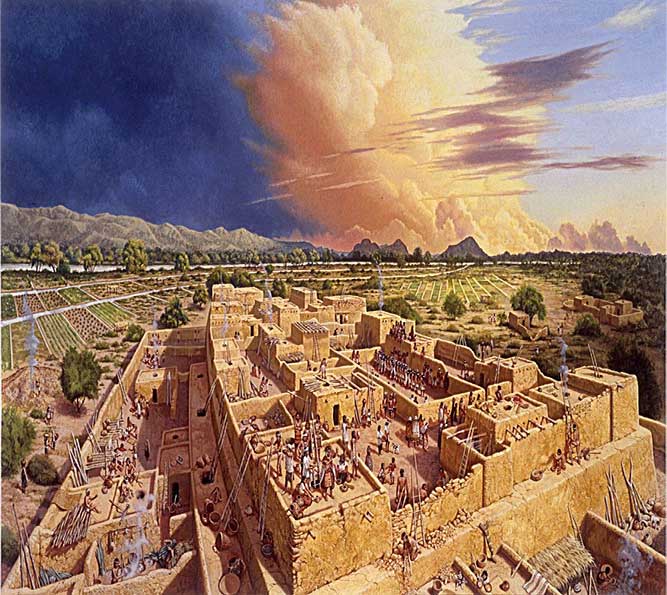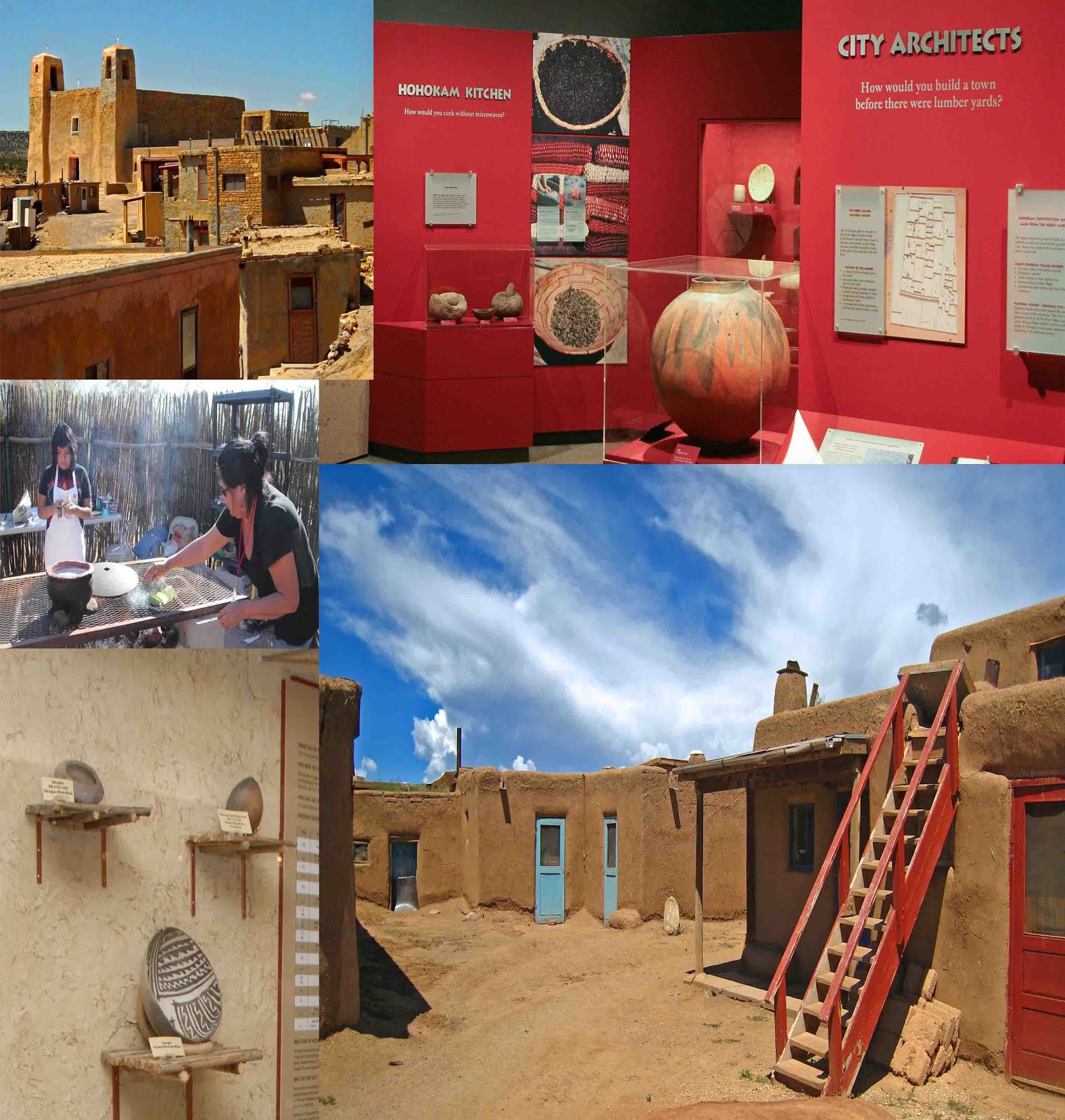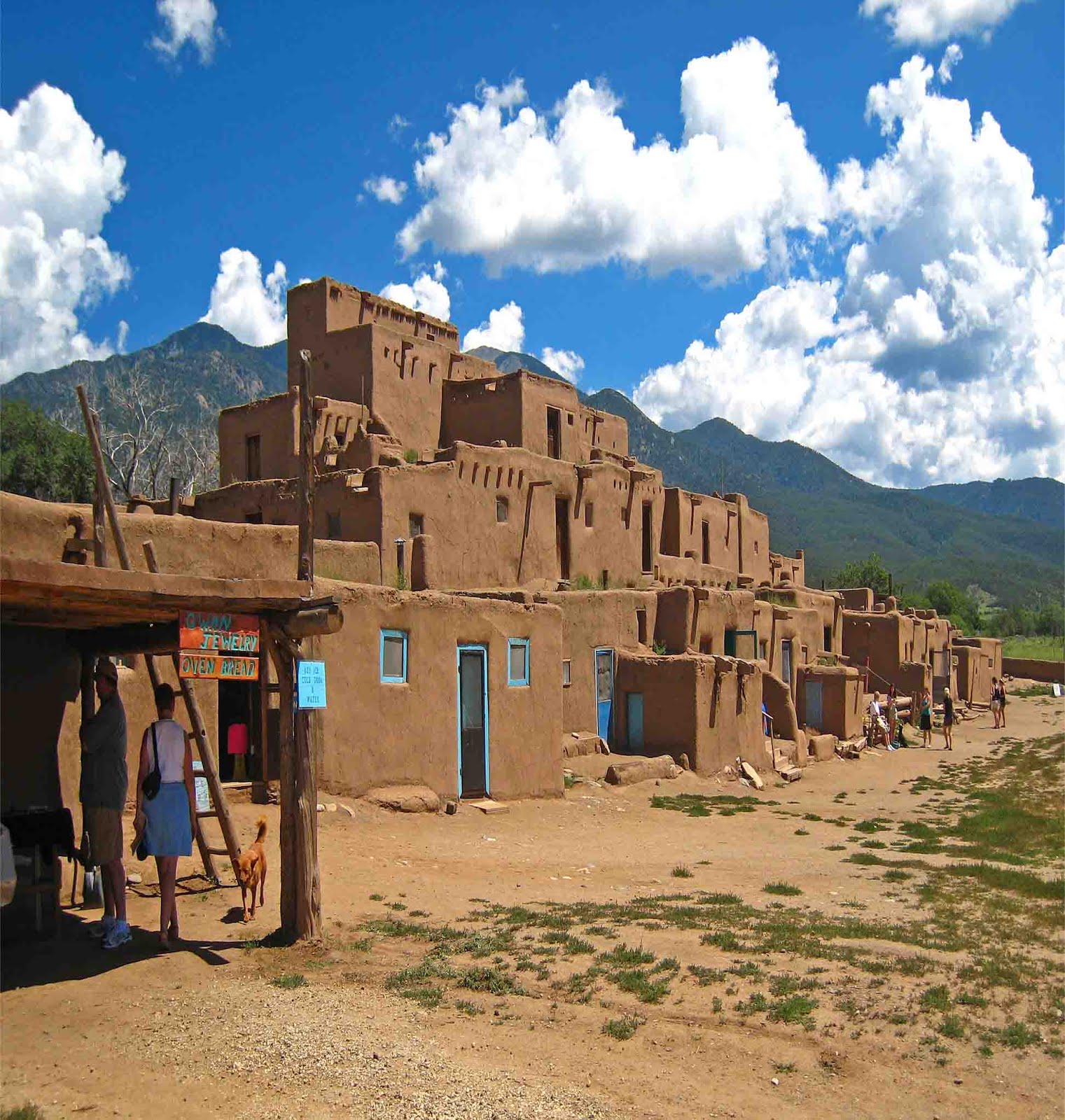Link to the film overview of the project
Excavating Memory (part 3)
Mesa Arts Center OVerview (part 2)
Mesa Arts Center Spark Festival (part 1)
Excavating Memory Project
Three components
Pueblo Grande-Archaeology
The Heard Museum-Ethnology
Mesa Art Center-Fine Art
Pueblo Grande Museum and archaeological center is a modern museum and preservation facility in the heart of Phoenix. Including, hands-on indoor activities, well produced exhibits, and a walking tour of a ball court and a large ruin, the center offers a varied and enjoyable learning environment. Presentations are current of a multimedia and hands on nature, looking at and discussing the ancient Hohokam civilization the earliest Phoenix valley residents. 
The Heard Museum features the art of historic and contemporary Native populations. Cutting edge relevant art is compared and contrasted to traditional and historic works. Some archaeological information is presented but the transition from archaic and extinct, to living cultures is at the forefront of the museum. 
The Mesa Arts Center is the largest comprehensive visual and performing arts campus in Arizona. With it’s numerous classrooms, studios, and other venues, it is ideal for a variety of presentations and programs. My plan is to increase awareness of archaeological studies and work, living and active Native communities and their links to the past, and encourage the creation of art based on the viewers personal memories.
Excavating Memory
We live in a society that is leaving an empty archive. Archaeologist will need to retrieve information from hard drives in the future to learn how people communicated, viewed themselves and wrote. Letters once meditative, thoughtful acts, sealed with kiss and whiff of perfume, have been replaced by brief texts and tweets. Likewise keepsakes and souvenirs fill our dumps created without craft in third world sweatshops like most of our current material culture.
What is it that fascinates us with the tangible nature of keepsakes a souvenir? Are we losing our connection to touch to cyberculture? Will touch become more important to digital natives? If digital natives would prefer to post a picture, will they also collect a souvenir?
We are losing a generation that survived a world war, the Great Depression, the Cold War, civil rights and the Vietnam era. What remnants does this generation harbor, what keepsakes or items do they have to remind them of days gone by? I would like to know personally, but more than that shouldn’t we be asking seniors to pass on their information and experiences?
The Upper Strata Theory
We exist in the current strata, we are surrounded by the uppermost strata the one we are creating. Memory necessarily exists in the lower strata substrata. Archaeologist are concerned with mapping, defining, and recording levels of earth that form unique groupings or strata. Being able to view forest beyond us or the trees that make up our daily life takes a component of solace. All art is conveying the chaos of emotion from a point of calm. Recognizing our personal strat break, the moment when we move into a new strata can prove difficult. We move through history from day to day few of us will shape it. Like a bit of shell, a grain of sand we are part of a shore and vast history the ocean. Nonetheless what would we know of the Santa Fe Trail, of pioneer folks, the American Civil War were it not for journals, letters, newspaper articles and of course the creation of art.
Imaginary Souvenirs
I propose a set of activities to conjure up the past, combing the gathering of precious or frivolous items. Arranging them into a simple composition, as a point of discussion, a talisman to evoke memory. The experience would be film put online as a series of films.
The final step would be to replace the actual items with found, created items that represent moments or markers in the participants life, strata. Or as is discussed features in the strata, that might define the strata.
If not for remembering wouldn’t we forget?
So the program I am proposing reaches out and connects three very different cultural centers, involves the gathering of oral histories from seniors, a web based portion, several short films, the creation and exhibition of simple works of art. In the end the work will be a document of several seniors, their lives and memories. By putting the works on display, getting the local media involved, and the web based portion the program has the potential to be a wide reaching learning tool and catalyst for a larger dialogue, about our aging populations, the importance of preservation and cultural survival.
Part I
Several senior students from the Mesa Arts Center agree to take part in the project. They can be from any of the art programs at any level.
Part II
The project involves the use of archaeological theories, terms, and practices. A trip to the Pueblo Grande Archaeological Center and use of their online educational materials in order to explain and make the participants aware of the larger ideas in the project.
Discussion of strata, features, and other terms can be easily addressed at the museum as they have numerous very well made displays explaining the basics of archaeology.
Tour the ruins discuss and try to imagine what went on at the site, what was life like?
Participants are encouraged to take notes record their thoughts. Pay close attention to the inclusion of any rock art, symbols and shape on pottery, other symbolic representation.
At this point my personal experiences in the field can be discussed and added to further illustrate the process of archaeology.
Part III
Onto the Heard Museum its mission and educational materials are geared toward living cultures though they have some archaeological materials. Discuss this transition and the balancing act the Heard has to perform. Look for language that may be offensive defining some cultures as extinct or historic. How do the works and images of Native Americans vary from popular images, in particular the images the seniors grew up with? How is culture defined versus subculture? Seniors are a subculture, what prejudice, misunderstanding, and difficulties do both Native populations and seniors face in the larger American mainstream? What about Native seniors? Are they treated as libraries of knowledge, elders, or thrown away?
Again the online materials from the Heard should be looked at addressed and notes taken. 
Part IV
Excavating memory reaching the substrata
Discuss a strata profile the mapping of strata.
Participants should draw a simple profile the present at top, the major moments of their lives, as strata breaks and features. If a moment is to be a feature what sort of artifact would represent that feature in a drawing? A wedding ring, a pacifier etc..does it have to be that literal.
A closing discussion of how archaeological strata forms, how it is defined in the field and the dangers of misreading such information. For next time students are asked to bring a few tiny items that relate to their strata four to five. No photos allowed.
Part V
Students should then discuss their profile, the symbols in it and the items they brought in for the exercise. All of this should be filmed for the web portion.
Begin thinking symbolically a wedding ring or photo of a child are too easy what else could be used to represent these ideas and events in their lives?
For next time students are encouraged to visit a hardware store, thrift shop, rummage in their garage for found objects that can represent moments in their lives. Only four to five objects with one object representing the participant.
Part VI
Imaginary Souvenirs
Arrange the found objects, do they form a circle, do they form a line, a grid and why? Was it challenging to sum up a lifetime with four to five objects? Discuss why they picked what they picked and why the self portrait object is present. Create a composition with the objects that can be displayed.
Part VI
Talisman
Discuss the upper strata what is life like for the participants at this moment. Think of symbol a item or way to represent the now. This can be drawn, painted or found or modified found object.
further work into the substrata create symbols for various moments of their lives abstract or literal.
Closing
Sum up the experience the work, how did finding an object versus creating an object influence their final work? What did they learn about symbolism in art? Discuss Cornell, Nevelson, and Tinguely.
Display the works post the films ask the question can we do better with our subcultures including our seniors? Can we show more respect? Do other cultures have elders versus burdens? Is youth and beauty valued more than age and wisdom? Why? Is the ultimate price of consumer culture thrown away people?
References
Jonathan Sanchez
ARE 6933
Pueblo Grande Museum and Archeological Park
The centers educational mission and goals resources and displays were studied to determine if their site could be used my program.
Mesa Arts Center
The center will provide the classrooms and studios needed to complete the program. The program I have in mind is in keeping with the larger mission of the center as presented on their website.
The Heard Museum
The wording of the educational material the use of culturally sensitive language, that hints at larger holistic culturally inclusive approach. The program I purpose will be working with seniors for which culturally sensitive language might be new. Further, and understanding of the way we talk about native populations has changed over time with our attitudes toward these populations.
Adams, J. Room 13 and the Contemporary Practice of Artist-Learners Studies in Art Education, Vol. 47, No. 1 (Fall, 2005), pp. 23-33
Developing a collaborative environment in the art classroom.
Americans for the Arts (2008) “Developing a logic model”
Used this as a general overview for approaching funding questions.
Wholeism idea getting students to see how things are interconnected and related. A complete reinventing of the classroom and an argument for such a reinvention. My thinking in this program is to fuse history, cultural, archaeological, and art studies into one presentation.
Cleveland, W., Morris, W., Takeshita, E. (2013) Learning Culture and Change: A Place-based Community Arts Training Model.
What is Art? What is Community?
What is Community Development?
What is the History and Ecology of Arts-based Community Development?
Where do I fit in this landscape?
All important ideas to consider as a basis. Further, the ideas of my proposed program are focused on helping to document members of the local community, and encouraging the community value their seniors.
I used this site to develop a sense for the general practices needed to write and present a proposal.
Cordell, L (2000) The Prehistoric Pueblo World. University of Arizona Press.
The term Ancestral Puebloan People versus Anasazi and the my basic knowledge of archaeology are taken from this book and others from Cordell.
Mann, C. (2012) 1493: The uncovering the World Columbus Created. Vintage books.
Adams, J. Room 13 and the Contemporary Practice of Artist-Learners Studies in Art Education, Vol. 47, No. 1 (Fall, 2005), pp. 23-33
“With the wider public, contemporary art has acquired significantly improved status and popularity; whilst the standing of these practices and their display and dissemination continues to grow, there has not been a similar bestowing of status or even legitimacy upon the production of art in schools. This article examines ways of analyzing classroom art practice as the collaborative art production of artist-teachers with artist-learners, a collaboration that is defined as a learning community of art practitioners, using cultural, community, and pedagogical theorists (Adams, 23).
While this project was being researched the City of Phoenix was making plans to slash spending for community centers, public pools, parks, and senior services. My art based project suddenly took on more importance as the cuts were in fact passed. To read more on this shameful stuff.
While this project was being researched the City of Phoenix was making plans to slash spending for community centers, public pools, parks, and senior services. My art based project suddenly took on more importance as the cuts were in fact passed. To read more on this shameful stuff.
The city manager's trial budget contains a reduction that would close the Sunnyslope
Community Center effective July 1, 2014. This would impact the summer program season.
Please consult the city manager's budget page for more details.
some of what will happen
• Close 13 community centers, eliminating classes, programs and special events attended by about 500,000 residents: 84.5 positions (part-time workers); $6.22 million savings.
• Close three senior centers, which provide meals and recreation and social services to elderly and disabled residents: 11 positions; $697,000 savings.
http://www.azcentral.com/
http://www.azcentral.com/